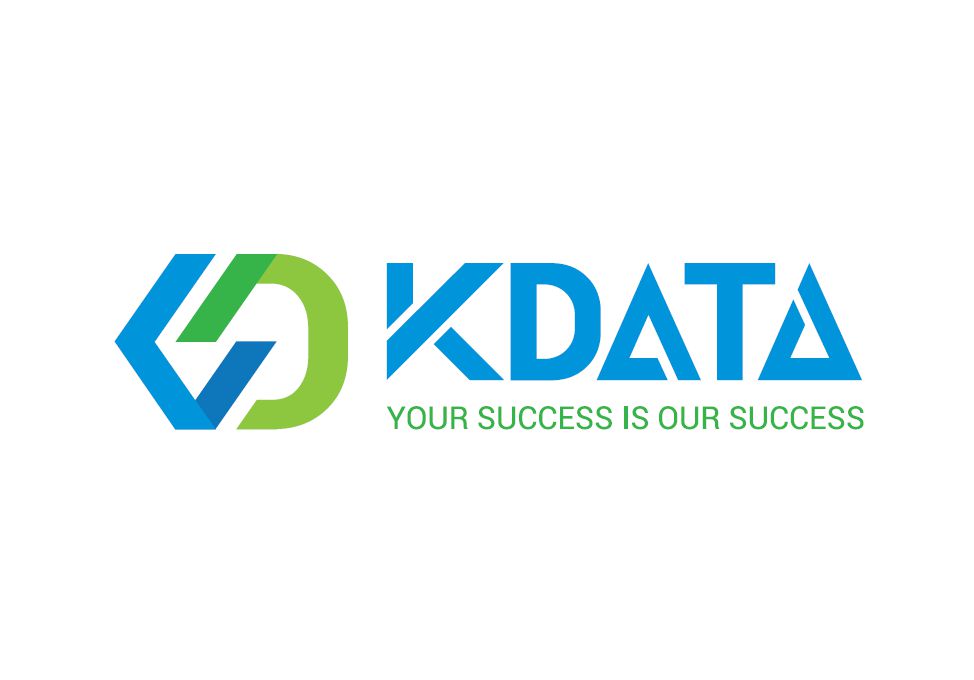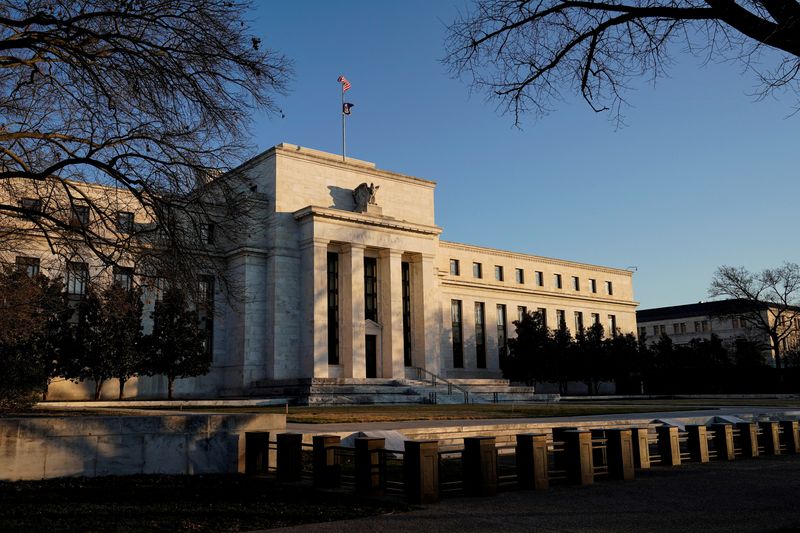


 © Reuters. FILE PHOTO: The Federal Reserve building is seen before the Federal Reserve board is expected to signal plans to raise interest rates in March as it focuses on fighting inflation in Washington, U.S., January 26, 2022. REUTERS/Joshua Roberts/File Phot
© Reuters. FILE PHOTO: The Federal Reserve building is seen before the Federal Reserve board is expected to signal plans to raise interest rates in March as it focuses on fighting inflation in Washington, U.S., January 26, 2022. REUTERS/Joshua Roberts/File Phot By Howard Schneider and Heather Timmons
WASHINGTON (Reuters) - President Joe Biden's top officials and Federal Reserve Chair Jerome Powell were quick to dismiss the first embers of inflation in the spring of 2021 in a single word: Transitory.
More than a year later, price increases at 40-year peaks have proven to be anything but, so much so that the Fed this week appears ready to hike interest rates by the most since 1994 to quell them. Biden, meanwhile, is paying the political price for being the face Americans blame for $5 a gallon gas and 10% price increases for eggs.
In truth, the culprits contributing to the current U.S. inflation are numerous. Fiscal spending likely went a step too far; a red-hot job market lifted worker pay the most in a generation; global supply shocks kept coming instead of easing; the war in Ukraine created food and fuel scarcities.
But both the Fed and Biden administration were slow to shift their focus from fighting the economic shock of the pandemic, particularly on employment, to controlling inflation that is so acute the central bank is willing to court a recession to fix it.
By mid-summer 2021, the pandemic employment hole was still nearly 7 million jobs, but price increases were already running at their highest in a decade and twice the Fed's 2% a year target. Biden and Powell each referred to "transitory" inflation within days of each other that July. Biden did so in a speech marking his first six months in office and Powell in his press conference following that month's Fed policy meeting.
By September, the Fed appeared to finally take note, when it signaled the labor market conditions it had set for dialing back its bond purchases - the first step toward higher rates - would soon be met. The consumer price index then had climbed by more than 5% year-on-year, belying expectations for an easing.
When the Fed actually started reducing its asset purchases in November it would be north of 6%.
Consumers noticed as well. A measure of near-term inflation expectations from the University of Michigan that month hit its highest since 2008.
That presented the first inklings of a new and deeper problem.
High inflation becoming rooted in public psychology is something Fed officials have feared as it lowers obstacles for companies to raise prices, keeps consumers spending furiously, and undermines the Fed's own credibility as an inflation fighter.
Indeed, that risk - which has only grown this year - is now central to the rapid change in the Fed's posture."As soon as (inflation) expectations move, you have to hit like a hammer. Do more and do it quick. That is where we are," said Larry Meyer, a former Fed governor and chief executive of LHMeyer, referring to the prospect of a three quarter point Fed rate hike this week.
THE BIDEN RESPONSE
For its part, the White House in mid-2021 created a task force to deal with supply chain snarls, thick with retail and logistics company leaders, tried to stamp down rising oil prices with releases from the strategic petroleum reserve and focused on anti-competitive practices in key industries.
In December, Biden declared victory over empty shelves, seconded by FedEx Corp (NYSE:FDX) chief executive Fred Smith.
But inflation did not respond, prompting Biden in the fall to double down on his big plan to fix it. The Build Back Better Act aimed hundreds of billions of dollars in investment at reducing health care, housing, childcare and prescription drug costs, among other issues.
Instead, it died in Congress after negotiations failed between the White House, and progressive Democrats and hold out senators.
By May of this year, Biden was highlighting the role the Fed, not the White House, would play in reducing inflation, while promising to look at tariffs on goods from China and other issues that could have some impact.
Treasury Secretary Janet Yellen, a key promoter of the term "transitory," publicly retired it in December, but she continued to reassure White House officials privately early this year that price pressures would ease in 2022. It was not until this month that she admitted her mistake.
White House officials now privately acknowledge they may have little control over price hikes ahead of the crucial November mid-terms, and would do what they could on the margins, while continuing to lay the blame on Russian President Vladimir Putin and his invasion of Ukraine that sent fuel and food costs sky-rocketing further.
BACK TO THE FED
Once Fed officials this year fully embraced that the situation had changed, their response took on increasing urgency as the clamor grew from financial market actors and other critics that they were woefully behind the curve.
They accelerated the end of their bond purchases and in March raised the benchmark short term federal funds rate for the first time since 2018, by a quarter percentage point.
But even then, policymakers' projections signaled what, by historical standards, would be a modest rise in the federal funds rate to around 1.9% by the end of the year, with no change in unemployment from the current low rate of 3.6%.
In early May, they raised rates again, by half a point this time, and for weeks afterward touted a plan to raise them by that margin again at meetings in June and July.
Since then, the outlook on prices has eroded further, with annual consumer inflation as of May accelerating to 8.6%, and persistently high prices now amounting to a generational shock. Stock markets have sunk into a full-on bear market on worries that the Fed's small steps will no longer be enough, and bond yields most sensitive to central bank policy expectations have shot to their highest since 2007.
When data on Friday showed a jump in consumers' expectations about inflation, coupled with a similar outcome in a Monday New York Fed survey, it may have convinced Fed officials that their pledge to tame prices had not yet registered - to either the public or financial markets.
Jason Furman, former chair of the Council of Economic Advisers and a Harvard University professor, said Fed officials were paying the price for policy that promised to fight inflation but lacked any firm commitment to push rates to restrictive levels.
"It is hard to convince people you are going to do serious things next year when you are not going to do them this year," he said.
EUR/USD
1.0658
-0.0008 (-0.07%)
Summary
↑ SellMoving Avg:
Buy (0)
Sell (12)
Indicators:
Buy (2)
Sell (3)
EUR/USD
1.0658
-0.0008 (-0.07%)
Summary
↑ SellMoving Avg:
Buy (0)
Sell (12)
Indicators:
Buy (2)
Sell (3)
GBP/USD
1.2475
-0.0015 (-0.12%)
Summary
↑ SellMoving Avg:
Buy (0)
Sell (12)
Indicators:
Buy (0)
Sell (10)
USD/JPY
157.91
+0.12 (+0.07%)
Summary
↑ BuyMoving Avg:
Buy (12)
Sell (0)
Indicators:
Buy (9)
Sell (0)
AUD/USD
0.6469
-0.0003 (-0.05%)
Summary
NeutralMoving Avg:
Buy (10)
Sell (2)
Indicators:
Buy (2)
Sell (3)
USD/CAD
1.3780
+0.0003 (+0.03%)
Summary
↑ BuyMoving Avg:
Buy (12)
Sell (0)
Indicators:
Buy (7)
Sell (0)
EUR/JPY
168.32
+0.10 (+0.06%)
Summary
↑ BuyMoving Avg:
Buy (12)
Sell (0)
Indicators:
Buy (9)
Sell (0)
EUR/CHF
0.9808
+0.0001 (+0.01%)
Summary
NeutralMoving Avg:
Buy (0)
Sell (12)
Indicators:
Buy (3)
Sell (2)
Gold Futures
2,295.80
-7.10 (-0.31%)
Summary
↑ SellMoving Avg:
Buy (0)
Sell (12)
Indicators:
Buy (0)
Sell (9)
Silver Futures
26.677
+0.023 (+0.09%)
Summary
↑ SellMoving Avg:
Buy (2)
Sell (10)
Indicators:
Buy (0)
Sell (9)
Copper Futures
4.5305
-0.0105 (-0.23%)
Summary
↑ BuyMoving Avg:
Buy (10)
Sell (2)
Indicators:
Buy (8)
Sell (1)
Crude Oil WTI Futures
81.14
-0.79 (-0.96%)
Summary
↑ SellMoving Avg:
Buy (0)
Sell (12)
Indicators:
Buy (1)
Sell (7)
Brent Oil Futures
85.62
-0.71 (-0.82%)
Summary
↑ SellMoving Avg:
Buy (1)
Sell (11)
Indicators:
Buy (1)
Sell (7)
Natural Gas Futures
1.946
-0.009 (-0.46%)
Summary
↑ SellMoving Avg:
Buy (0)
Sell (12)
Indicators:
Buy (0)
Sell (5)
US Coffee C Futures
213.73
-13.77 (-6.05%)
Summary
↑ SellMoving Avg:
Buy (3)
Sell (9)
Indicators:
Buy (0)
Sell (10)
Euro Stoxx 50
4,920.55
-60.54 (-1.22%)
Summary
↑ SellMoving Avg:
Buy (4)
Sell (8)
Indicators:
Buy (1)
Sell (7)
S&P 500
5,035.69
-80.48 (-1.57%)
Summary
↑ SellMoving Avg:
Buy (0)
Sell (12)
Indicators:
Buy (0)
Sell (7)
DAX
17,921.95
-196.37 (-1.08%)
Summary
↑ SellMoving Avg:
Buy (0)
Sell (12)
Indicators:
Buy (1)
Sell (6)
FTSE 100
8,144.13
-2.90 (-0.04%)
Summary
SellMoving Avg:
Buy (5)
Sell (7)
Indicators:
Buy (2)
Sell (4)
Hang Seng
17,763.03
+16.12 (+0.09%)
Summary
↑ SellMoving Avg:
Buy (0)
Sell (12)
Indicators:
Buy (1)
Sell (6)
US Small Cap 2000
1,973.05
-42.98 (-2.13%)
Summary
↑ SellMoving Avg:
Buy (0)
Sell (12)
Indicators:
Buy (0)
Sell (7)
IBEX 35
10,854.40
-246.40 (-2.22%)
Summary
NeutralMoving Avg:
Buy (6)
Sell (6)
Indicators:
Buy (3)
Sell (3)
BASF SE NA O.N.
49.155
+0.100 (+0.20%)
Summary
↑ SellMoving Avg:
Buy (0)
Sell (12)
Indicators:
Buy (1)
Sell (7)
Bayer AG NA
27.35
-0.24 (-0.87%)
Summary
↑ SellMoving Avg:
Buy (0)
Sell (12)
Indicators:
Buy (0)
Sell (8)
Allianz SE VNA O.N.
266.60
+0.30 (+0.11%)
Summary
↑ SellMoving Avg:
Buy (0)
Sell (12)
Indicators:
Buy (3)
Sell (5)
Adidas AG
226.40
-5.90 (-2.54%)
Summary
↑ SellMoving Avg:
Buy (0)
Sell (12)
Indicators:
Buy (2)
Sell (7)
Deutsche Lufthansa AG
6.714
-0.028 (-0.42%)
Summary
NeutralMoving Avg:
Buy (3)
Sell (9)
Indicators:
Buy (9)
Sell (1)
Siemens AG Class N
175.90
-1.74 (-0.98%)
Summary
↑ SellMoving Avg:
Buy (0)
Sell (12)
Indicators:
Buy (0)
Sell (9)
Deutsche Bank AG
15.010
-0.094 (-0.62%)
Summary
NeutralMoving Avg:
Buy (4)
Sell (8)
Indicators:
Buy (6)
Sell (2)
| EUR/USD | 1.0658 | ↑ Sell | |||
| GBP/USD | 1.2475 | ↑ Sell | |||
| USD/JPY | 157.91 | ↑ Buy | |||
| AUD/USD | 0.6469 | Neutral | |||
| USD/CAD | 1.3780 | ↑ Buy | |||
| EUR/JPY | 168.32 | ↑ Buy | |||
| EUR/CHF | 0.9808 | Neutral |
| Gold | 2,295.80 | ↑ Sell | |||
| Silver | 26.677 | ↑ Sell | |||
| Copper | 4.5305 | ↑ Buy | |||
| Crude Oil WTI | 81.14 | ↑ Sell | |||
| Brent Oil | 85.62 | ↑ Sell | |||
| Natural Gas | 1.946 | ↑ Sell | |||
| US Coffee C | 213.73 | ↑ Sell |
| Euro Stoxx 50 | 4,920.55 | ↑ Sell | |||
| S&P 500 | 5,035.69 | ↑ Sell | |||
| DAX | 17,921.95 | ↑ Sell | |||
| FTSE 100 | 8,144.13 | Sell | |||
| Hang Seng | 17,763.03 | ↑ Sell | |||
| Small Cap 2000 | 1,973.05 | ↑ Sell | |||
| IBEX 35 | 10,854.40 | Neutral |
| BASF | 49.155 | ↑ Sell | |||
| Bayer | 27.35 | ↑ Sell | |||
| Allianz | 266.60 | ↑ Sell | |||
| Adidas | 226.40 | ↑ Sell | |||
| Lufthansa | 6.714 | Neutral | |||
| Siemens AG | 175.90 | ↑ Sell | |||
| Deutsche Bank AG | 15.010 | Neutral |
| Mua/Bán 1 chỉ SJC # So hôm qua # Chênh TG | |
|---|---|
| SJC Eximbank | 8,300/ 8,500 (8,300/ 8,500) # 1,298 |
| SJC 1L, 10L, 1KG | 8,300/ 8,520 (0/ 0) # 1,510 |
| SJC 1c, 2c, 5c | 7,380/ 7,550 (0/ 0) # 540 |
| SJC 0,5c | 7,380/ 7,560 (0/ 0) # 550 |
| SJC 99,99% | 7,370/ 7,470 (0/ 0) # 460 |
| SJC 99% | 7,196/ 7,396 (0/ 0) # 386 |
| Cập nhật 01-05-2024 10:45:19 | |
| Xem lịch sử giá vàng SJC: nhấn đây! | |
| ↀ Giá vàng thế giới | ||
|---|---|---|
| $2,285.72 | -47.5 | -2.04% |
| ʘ Giá bán lẻ xăng dầu | ||
|---|---|---|
| Sản phẩm | Vùng 1 | Vùng 2 |
| RON 95-V | 25.440 | 25.940 |
| RON 95-III | 24.910 | 25.400 |
| E5 RON 92-II | 23.910 | 24.380 |
| DO 0.05S | 20.710 | 21.120 |
| DO 0,001S-V | 21.320 | 21.740 |
| Dầu hỏa 2-K | 20.680 | 21.090 |
| ↂ Giá dầu thô thế giới | |||
|---|---|---|---|
| WTI | $80.83 | +3.39 | 0.04% |
| Brent | $85.50 | +3.86 | 0.05% |
| $ Tỷ giá Vietcombank | ||
|---|---|---|
| Ngoại tệ | Mua vào | Bán ra |
| USD | 25.088,00 | 25.458,00 |
| EUR | 26.475,36 | 27.949,19 |
| GBP | 30.873,52 | 32.211,36 |
| JPY | 156,74 | 166,02 |
| KRW | 15,92 | 19,31 |
| Cập nhật lúc 10:45:15 01/05/2024 Xem bảng tỷ giá hối đoái | ||
